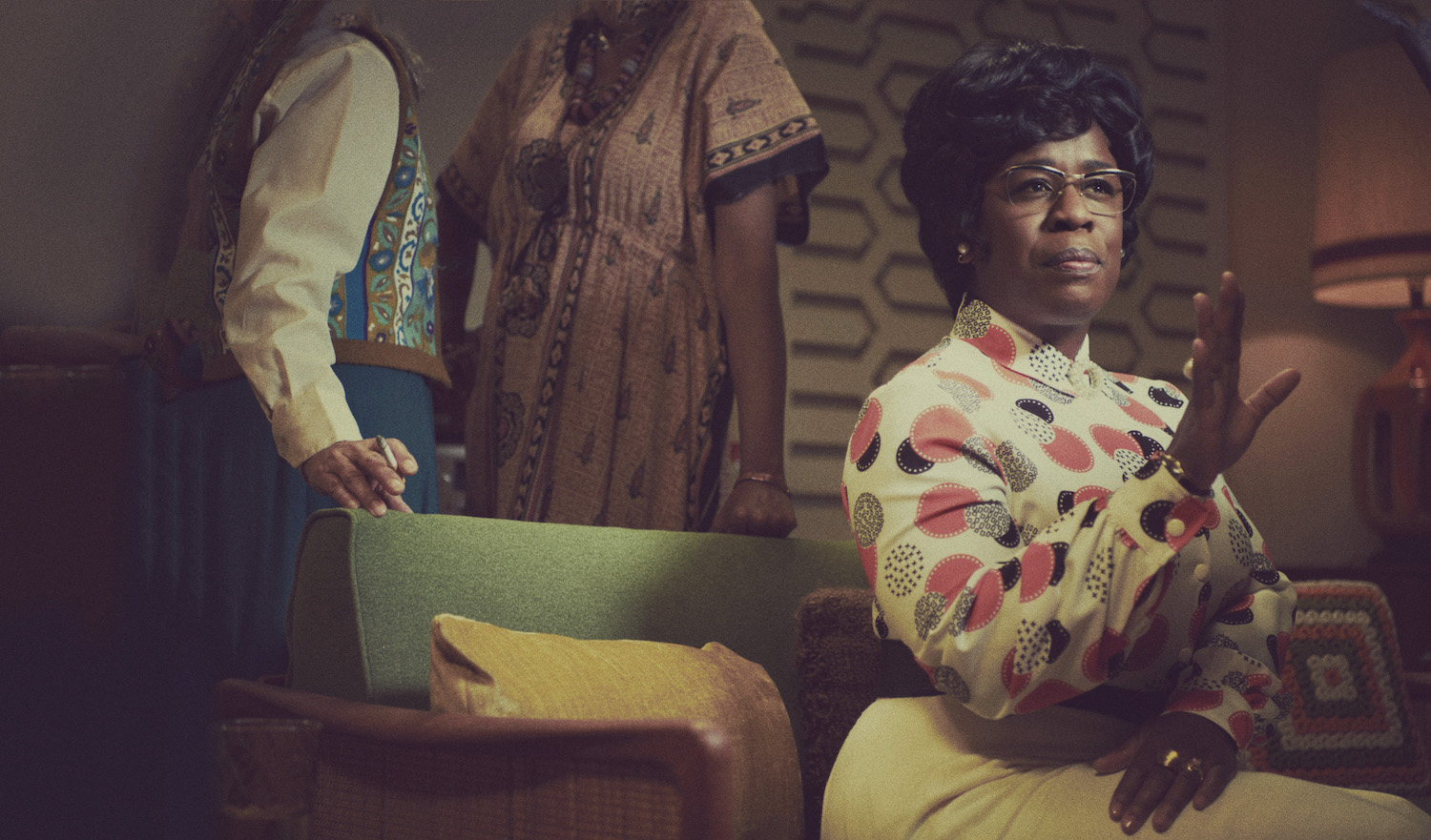A stylistic period piece, Mrs. America delves into the debate over the Equal Rights Amendment. Everything about this show oozes beauty, from the perfectly quaffed hair of Phyllis Schlafly’s followers, to Gloria Steinem’s glasses, to Shirley Chisholm’s graphic jacket-dress ensembles, but good television should be about more than just the nostalgia for its time period. And that’s where Mrs. America falls short.
Following the example set by Bombshell, Mrs. America makes the mistake of centering the life and history of a conservative white woman. Don’t get me wrong I love Cate Blanchett and her performance as Phyllis Schlafly is as smart and nuanced as we have come to expect from Blanchett as an actor. I believe the fault lies with the creators of the show and in a way, I can’t even place the blame completely on their shoulders.
In a time where intersectional feminism seems to be at the center of every diversity conversation, t-shirt, and tote bag, many television and movie projects miss the mark. Certainly, the execution and practice of this theory has a little to be desired. A 2019 study by USC Annenberg found that across a sample of 1,300 films, the number of people of color in lead or co-lead roles was only 17%. And only 4.5% of all 47,268 speaking or named characters across the past 12 years were Latino, as were a mere 3% of lead or co-lead actors. I doubt when Kimberlé Crenshaw coined the term “intersectional feminism” she was thinking of tote bags but that’s what it’s been distilled to, disconnected from its original meaning and easy to obtain.
When there are nine episodes of Mrs. America and only one focuses on a woman of color, is that truly capturing the feminist movement? I argue not only does it miss the mark, it continues to perpetuate a dangerous narrative that feminism is for and by white women. Shirley Chisholm, played beautifully by Uzo Aduba, was not the only woman of color in congress working to pass the ERA. The fact that the show uses Chisholm and two other activists as the token characters delegated to supporting roles as opposed to Cate Blanchett’s Schlafly is, to put it simply, a mistake.
Mrs. America features Flo Kennedy, played by Niecy Nash, and Margaret Sloan-Hunter, played by Bria Samoné Henderson, both important and influential feminist activists. But neither of them receive their own episodes. In fact, the only Black editor at Ms. Magazine, Margaret is the only the second BIPOC character, other than Shirley Chisholm, who has received her own storyline. We watch her ideas get sidelined, questioned, and overlooked as she pitches a story about tokenism in the workplace. Margaret says in the meeting, “This phenomenon that happens where one minority is propped up to cover the experience of an entire population. Like the white population, we are diverse within ourselves.” The ironic part is the creators didn’t take their own message to heart.
The inclusion of Shirley Chisholm, Flo Kennedy, Margaret Sloan-Hunter, and other activists show that the writers and creators made a concerted effort to try to avoid the “white feminist” narrative pot hole. But inclusion is not enough. Feminism was founded, built, and created by queer women of color and non-binary people. To not center them in a show about the ERA feels like taking one step forward while realizing you’re on the wrong escalator.
This point is only affirmed when looking at IMDB’s list of the eleven writers and directors on the show. Only three are Black, with no Latinx or Asian writers or directors listed. This doesn’t surprise me. We know when there are diverse voices behind the camera, stories become more nuanced in their diversity. To not include Dolores Huerta, a Latina activist who helped lead the feminist movement including working with Gloria Steinem in the 60’s, continues the erasure of Latinx people in the feminist movement. To not include Patsy Matsu Takemoto, the first woman of color and first Asian-American congresswoman elected (who also helped pass Title IX and Women’s Education Equity Act in 1974), continues the erasure of Asian American people in the feminist movement. To not center Shirley Chisholm in every episode, instead of Phyllis Schlafly, continues the erasure of Black people in the feminist movement. These choices show us how far we have to go and who still holds the power. Because if Shirley Chisholm isn’t the iconic embodiment of what feminism should be, I don’t know what is.
If we are going to create shows and films to tell the untold story of the feminist movement, we need to include all feminists. Take the opportunity and challenge to show how diverse feminism is. Show the struggle that women of color and queer people went through to be accepted by the white feminist movement. These are the stories that should be front and center now. Intersectionality isn’t a fleeting theme, it’s a lens to see the invisible, to understand what’s really going on today and how we got here. Everyone who holds the strings to our culture should be using it to create media. Otherwise, we just end up with another useless metaphorical tote bag.

